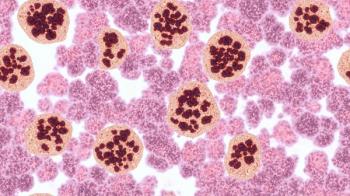
Guideline-Recommended Treatments for Symptomatic and Generalized Epilepsies
Understanding the recommendations of evidence-based guidelines is an important component of treating patients with therapies backed by the best available evidence.
Understanding the recommendations of evidence-based guidelines is an important component of treating patients with therapies backed by the best available evidence.
Sandra L. Helmers, MD, MPH, discussed the treatment of generalized epilepsies at the 68th annual meeting of the American Epilepsy Society in Seattle, Washington. Although many treatments for epilepsy have been developed and approved, many types of epilepsies exist, and the treatment of different types of epilepsy varies.
In general, epilepsies may be focal or generalized, and may or may not be associated with neurodevelopmental abnormalities that are visible on magnetic resonance imaging scans.1 Goals of treatment for symptomatic and progressive generalized epilepsies include optimizing seizures control, minimizing adverse events, and improving quality of life. Patients with epilepsy are typically refractory to treatment, and generally do not experience complete control of epilepsy episodes with therapy.
Commonly used treatment modalities for generalized epilepsy include anticonvulsants, neurostimulation therapy, dietary control measures, and brain surgery. Some patients may also receive other complementary therapies.
Guidelines for the selection of antiepileptic drugs (AEDs) include 2 types of guidelines: those that are solely based on evidence, and other guidelines that rely on expert opinion, surveys, or the Delphi method in a group of experts.
Evidence-based guidelines include:
· The International League Against Epilepsy (ILAE) Guidelines2
· The National Institute for Clinical Excellence Guidelines3
· The American Academy of Neurology and American Epilepsy Society (AAN/AES) Guidelines4
· The Scottish Intercollegiate Guidelines Network Guidelines5
· The Status Epilepticus (SE) Working Group Guidelines6
Of these guidelines, the most widely accepted and up-to-date guideline used by US health care professionals is the ILAE Guideline. Regarding guideline-recommended treatments, it is notable that not all epilepsies have treatments supported by high-quality evidence. Evidence quality is classified as level A (highest quality), B (intermediate quality), or C (lower quality).
For children with generalized-onset tonic-clonic seizures, children with absence seizures, patients with benign epilepsy with centro-temporal spikes, adults and children with generalized tonic-clonic seizures, and patients with absence seizures, available guideline-recommended treatments are supported only by level C evidence. In one condition, juvenile myoclonic epilepsy, no available treatments recommended by guidelines are supported by any level A through C evidence. The only epilepsy disease state with recommended treatments backed by level A or B evidence is partial-onset seizures. ILAE-preferred treatments in partial-onset seizures are as follows2:
· In adults with partial-onset seizures, carbamazepine and phenytoin are preferred first-line treatments backed by level A evidence. Valproate is another option for these patients, but is backed by level B evidence. Several level C options are available.
· In children, partial-onset seizures are treated with different medications, preferably oxcarbazepine (level A). Although several other options are backed by level C evidence, no other agents are backed by level A or B evidence for children with partial-onset seizures.
· In elderly adults with partial-onset seizures, gabapentin and lamotrigine are preferred treatments, backed by level A evidence. Although use of carbamazepine is backed by level C evidence, no other agents are backed by level A or B evidence for children with partial-onset seizures.
Other guidelines categorize treatments differently. For instance, rather than providing the level of evidence supporting the use of a given medication, the AAN/AES guidelines simply state whether or not a given treatment is an appropriate option for patients with a given type of seizure. From these guidelines, it is evident that lamotrigine and topiramate are treatment options in the largest range of seizure types. Other treatments are recommended for use in a narrower range of conditions. For instance4:
· Gabapentin may be used to treat newly diagnosed partial or mixed seizures as monotherapy, and as adjunctive therapy for continued treatment of partial seizures
· Oxcarbazepine may be used to treat newly diagnosed partial or mixed seizures as monotherapy, and as adjunctive therapy or monotherapy for continued treatment of partial seizures
· Tiagabine, zonisamide, and levetiracetam may be used adjunctively to treat partial seizures in adults
AEDs may also be categorized by the spectrum of epilepsies in which they are used. Some treatments are used only in very specific types of epilepsy. For instance, ethoxsuximide is only used in absence seizures, and methsuximide and acetazolamide are only used for absence seizures and generalized tonic-clonic seizures. Similarly, vigabatrin, ACTH, and prednisone are limited to use in infantile spasms.
Other AEDs are used exclusively for focal epilepsies. AEDs that treat focal epilepsies include oxcarbazepine, carbamazepine, phenobarbital, phenytoin, topiramate, valproate, gapabantin, pregabalin, lacosamide, ezogabine, and perampanel.
The broadest spectrum AEDs, which can be used to treat both focal and generalized epilepsies, include lamotrigine and topiramate, as well as zonisamide, levetiracetam, valproate, rufinamide, felbamate, benzodiazepines, and triple bromides.
Beyond pharmacotherapy, other treatments, including neurostimulation, diet, brain surgery, and other treatment modalities, may be used to optimize seizure control and attain the dual goals of adverse event minimization and quality-of-life optimization. By understanding the spectrum of available treatments, pharmacists can better understand the scope of available treatments and the limitations of current pharmacotherapies for epilepsy.
References
1. Tich SN, Péréon Y. Semiological seizure classification. Epilepsia. 1999;40(4):531.
2. Glauser T, Ben-Menachem E, Bourgeois B, et al. ILAE treatment guidelines: evidence-based analysis of antiepileptic drug efficacy and effectiveness as initial monotherapy for epileptic seizures and syndromes. Epilepsia. 2006;47(7):1094-1120.
3. NICE. The epilepsies: the diagnosis and management of the epilepsies in adults and children in primary and secondary care. www.nice.org.uk/guidance/cg137. Accessed December 2014.
4. Ben-Menachem E. AAN/AES guidelines on use of new AEDS. Epilepsy Curr. 2005;5(1):30-32.
5. SIGN. Diagnosis and Management of Epilepsy in Adults. www.sign.ac.uk/guidelines/fulltext/70/. Accessed December 2014.
6. SE Working Group. Treatment of convulsive status epilepticus. Recommendations of the Epilepsy Foundation of America's Working Group on Status Epilepticus. JAMA. 1993;270(7):854-859.
Newsletter
Stay informed on drug updates, treatment guidelines, and pharmacy practice trends—subscribe to Pharmacy Times for weekly clinical insights.




















































































































































































































